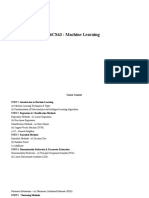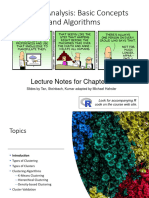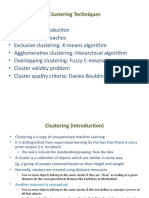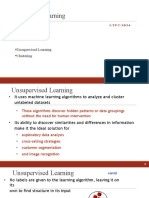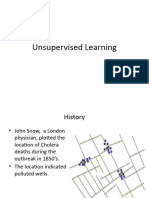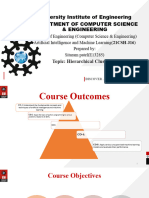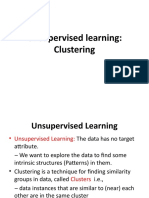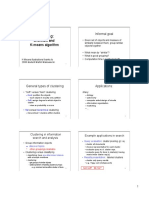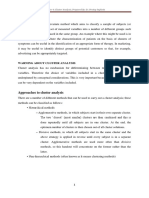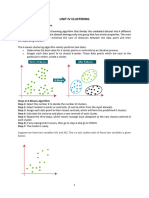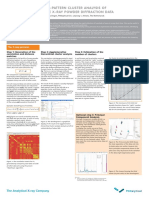0% found this document useful (0 votes)
31 views56 pagesML 07 Clustering
The document provides an overview of clustering in machine learning, focusing on unsupervised learning techniques to group unlabeled data points based on similarity. It discusses various clustering methods, including partitional, hierarchical, density-based, and graph-based approaches, along with specific algorithms like K-means and DBSCAN. The document also highlights challenges in clustering, such as determining the number of clusters and handling outliers.
Uploaded by
yogtinkuCopyright
© © All Rights Reserved
We take content rights seriously. If you suspect this is your content, claim it here.
Available Formats
Download as PDF, TXT or read online on Scribd
0% found this document useful (0 votes)
31 views56 pagesML 07 Clustering
The document provides an overview of clustering in machine learning, focusing on unsupervised learning techniques to group unlabeled data points based on similarity. It discusses various clustering methods, including partitional, hierarchical, density-based, and graph-based approaches, along with specific algorithms like K-means and DBSCAN. The document also highlights challenges in clustering, such as determining the number of clusters and handling outliers.
Uploaded by
yogtinkuCopyright
© © All Rights Reserved
We take content rights seriously. If you suspect this is your content, claim it here.
Available Formats
Download as PDF, TXT or read online on Scribd
/ 56
